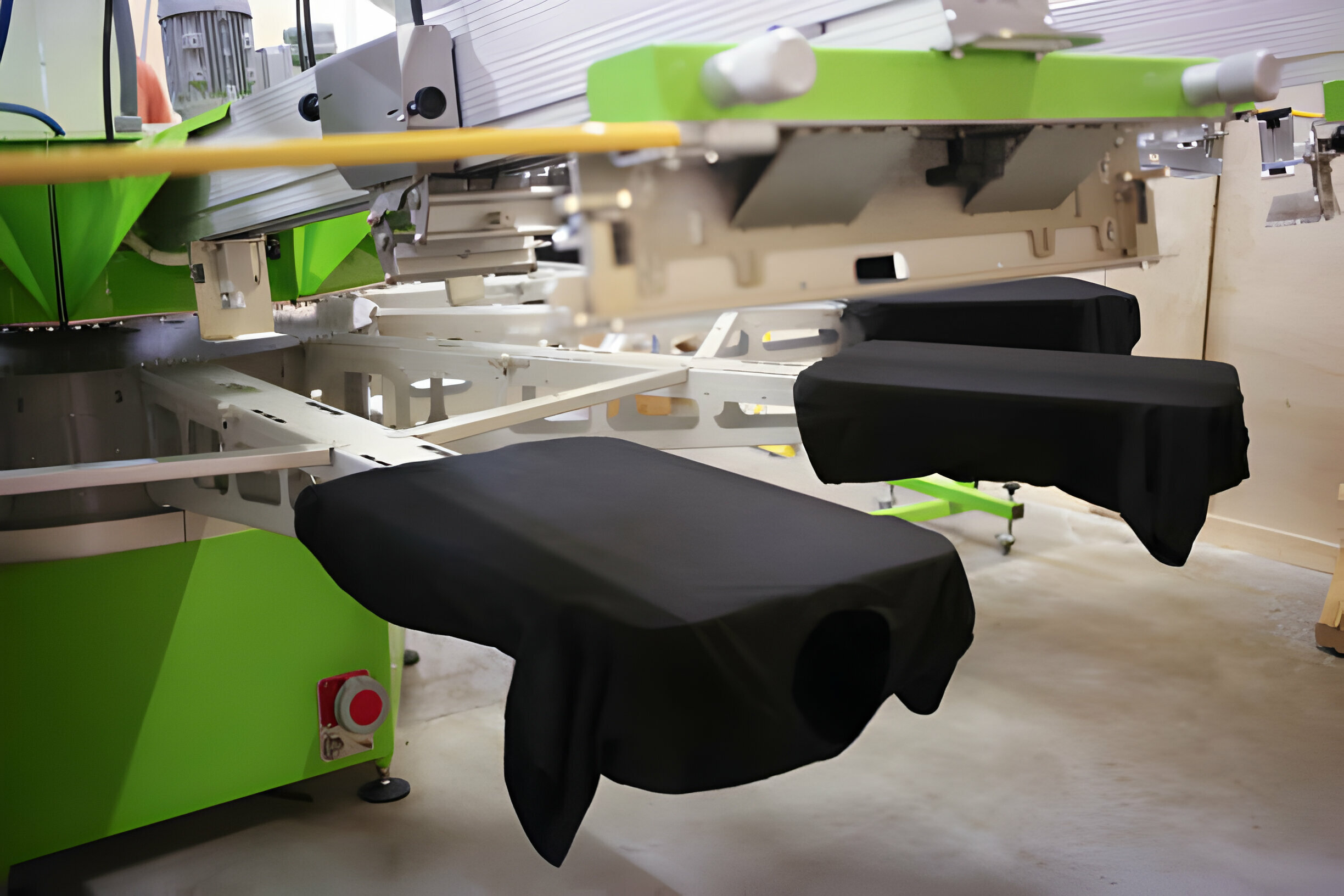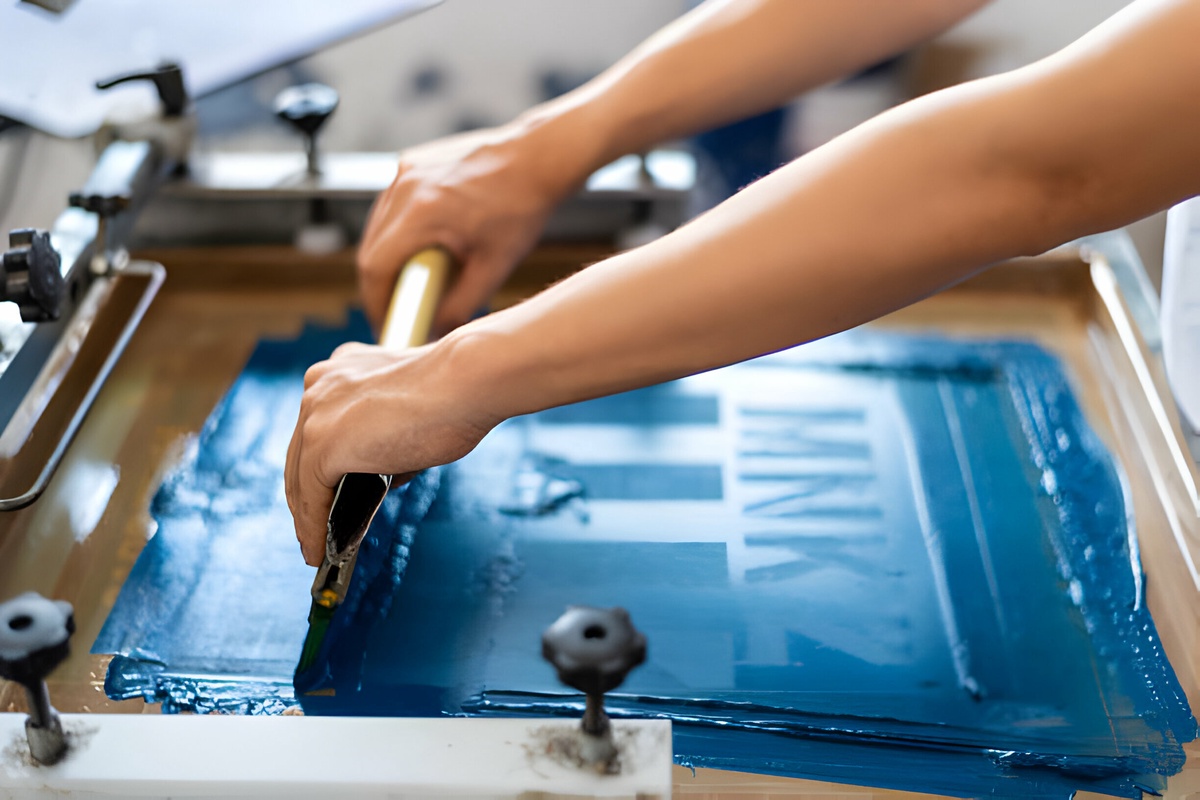Screen printing is a process that dates to ancient times, but it’s as relevant in today’s creative industries as ever. This seemingly simple method of applying design to materials, particularly fabric, has a surprising depth to it that provides endless opportunities for innovation and enhancement.
In this era of industrial digitization and the increasing clamor for 'smart' ways of working, it is essential to understand how we can leverage advanced screen printing techniques to maximize productivity and efficiency. The intention of this blog post is not only to enrich the knowledge of screen printers about novel techniques but also to empower them to work smarter, not harder.
Consider this post as your guide, teaching you the innovative ways of screen printing that could save time, improve efficiency, and reduce waste in production. The printing industry is evolving rapidly, and with the right choice of materials, equipment, and techniques, you can ensure you are at the forefront of this revolution.
Understanding the Core of Screen Printing
Screen printing, also known as serigraphy, is a technique that involves the use of a mesh or stencil to transfer ink onto a substrate, except in areas made impermeable to the ink by blocking stencils. This method has been in use since China's Song Dynasty (960-1279 AD), proving its durability and timeless appeal.
The evolution of screen printing involves advancements in technology, materials, and methods, all of which have contributed to its endurance as a popular art form and an efficient way of mass production. What makes screen printing unique is its versatility. It can be applied on various substrates - textiles, ceramics, wood, metal, glass, and many more - making it a go-to solution for a multitude of creative applications.
Today, screen printing is widely used across numerous industries including the garment industry, electronics, and advertising. It is appreciated for its flexibility in creating vibrant and detailed designs, especially on darker substrates, as well as the durability of printed objects that can outlast prints generated by other printing methods.

Streamlining Your Workflow
Whether you're a talented craftsman or a commercial producer, thoughtful pre-production planning is crucial to making your screening process efficient and profitable. It all starts by visualizing your design, selecting your substrate, and preparing your screens. The more meticulously you plan, the smoother your production process will run.
Efficiency is not just about high speed, but also about reducing waste. Therefore, use precise measurements when designing your template and defining the size and position of the stencil on the screen. This helps in reducing the waste of ink and substrate. Bear in mind that efficient planning includes anticipating potential problems and having solutions in place.
One fine example in this regard is Habitat Custom, a bespoke signage and printing company. They leveraged pre-production planning and precision to lower their material waste by 20% and increase their output by 35% - a significant achievement that underscores the importance of an efficient planning process.
It's always wise to run a small-scale test before the full-scale production. This way, you can identify any issues that could hinder the quality of the final product and rectify them before it's too late. Remember, your goal should be to optimize every aspect of your process to achieve maximum efficiency.
Invest in Modern Equipment
Much like pre-production planning, investing in modern and appropriate equipment is essential for a prolific screen printing operation. The right equipment not only increases efficiency but also improves the quality of output.
To illustrate, an automatic screen printer can significantly speed up the production process while maintaining the uniformity and precision of printing that might require substantial effort if done manually. Take, for instance, M&R's Renegade Graphics Presses, which owing to their innovative features and superior performance, have become the industry standard for automatic screen printing.
Similarly, consider a flash cure unit, especially for multicolor prints. These machines dry the ink between each pass, preventing colors from bleeding into each other and reducing smudging. They also substantially speed up the overall process by allowing the immediate overlay of another color.
Don't shy away from exploring new additive technologies like UV-LED Curing units. They offer faster drying times and energy savings, contributing to even greater efficiency and reduced operating costs.
Automating Screen Printing
Automation is making waves in various industries by offering precision, speed, and minimal human intervention. Screen printing is no exception. Automatic screen printing machines help standardize print quality, increase production speed, and reduce physical strain on the printer. In essence, they make work easier, faster, and more efficient.
For example, Anatol's automatic screen printing machines are designed for high-volume output and can maximize productivity while maintaining exceptional print quality. Their "VOLT" series employs electric print heads and multiple servo motors to ensure full control over every aspect of the print.
While automatic machines might involve a significant initial outlay, their long-term benefits far outweigh this. They enhance productivity, improve quality, and reduce wastage, thus leading to increased returns over time.
The Power of Digital Printing
In the era of the digital revolution, it's essential to understand and exploit the convergence of digital and screen printing. These two seemingly different techniques can be harmoniously integrated to enhance both efficiency and scope of creativity.
Digital Printing offers quick setup times and the ability to make changes on the fly which are challenging for traditional screen printing. On the other hand, screen printing is preferred for vast color gamut, large quantity runs, specialty inks, and printing on various substrate materials.
In combination, they enable faster prototyping, customization options, and a wider variety of designs that traditional screen printing alone cannot provide. For instance, you can create a design digitally, print it using a DTG printer onto a transfer paper, and then use a heat press to transfer it onto the desired substrate. This combination of digital and screen printing is beneficial in creating small batches of custom prints swiftly and efficiently.
Opting for Eco-friendly Practices
In an era where environmental sustainability is of paramount importance, it is essential to adopt eco-friendly practices in screen printing. Using water-based inks and other eco-friendly materials reduces both the environmental impact and your exposure to harmful chemicals.
One big step towards environmentally friendly practices is to switch from traditional plastisol inks to water-based inks. Not only do the latter kind of inks contain fewer volatile organic compounds, but they also give your prints a softer, more comfortable feel, and can be air-dried, saving energy.
Another way of minimizing waste is through efficient planning and recycling of materials whenever possible. Avoid overproduction and strive for precision in your measurements to minimize waste. Furthermore, you can also make use of biodegradable screen washes and emulsion removers which are less damaging to the environment.
High-quality Inks: A Gamechanger
The choice of ink plays a significant role in the finished print's appearance and durability. Therefore, investing in high-quality inks can make all the difference between an average and a standout print.
A good quality ink, like those by Speedball or Jacquard, not only ensures vibrant color and superior coverage but also longer-lasting impressions. Furthermore, high-quality inks tend to have a better consistency, making them easier to pour, mix, and build up on the stencil - leading to more precise and detailed prints.
Consider factors like the ink’s composition, opacity, drying speed, and washability when choosing your screen printing inks. It may require an upfront investment, but the payoff is a stunningly detailed and durable print that enhances your overall efficiency and profits.
Artful Exploration with Mixed Media
Creativity knows no boundaries, and screen printing allows ample space for experimentation. By blending different materials or techniques, you can achieve unique designs and textures that set your work apart.
You can mix various types of media like embroidery, foiling, or rhinestones with screen prints to create multi-dimensional and eye-catching designs. For instance, applying a foil or a glitter overlay to a screen print can add a festive and luxurious touch to your print.
Regular Equipment Maintenance
Even the most sophisticated and expensive screen printing setup will not yield desirable results if the equipment is not in optimal condition. Regular equipment maintenance and care are essential for consistently high-quality prints and a prolonged lifespan of your tools.
Cleaning your screen after each run prevents ink residues from hardening and blocking the mesh. Neglecting this step can lead to clogging and degradation of prints in the long run. Furthermore, regular cleaning and maintenance of the machine parts, such as the squeegees and flood bars, ensure smooth running, faster recovery between runs, and minimal downtime.
Timely replacement of worn-out parts like mesh screens, squeegees, and bulbs is another crucial aspect of equipment maintenance. Worn-out parts can negatively impact print quality and delay production timelines.
Upskilling through Workshops & Courses
Screen printing is an ever-evolving industry. New techniques, materials, and technologies are continually emerging, and it is vital to keep your skills and knowledge updated to remain competitive.
Attending screen printing workshops can expose you to innovative techniques, provide you with hands-on experience and training, and allow you to network with other industry professionals. Similarly, several online courses can help you acquire new skills right from the comfort of your workspace.
Conclusion
Every art or industrial process has the potential for innovation and improvement, and screen printing is no exception. The above innovative techniques and methodologies aim to foster creativity, increase efficiency, and prepare screen printers for the future of this ever-evolving field.
Whether it's about streamlining your workflow, adopting eco-friendly practices, or staying updated with industry trends, every aspect contributes to a smarter, not harder, way of screen printing. So, go ahead and assimilate these insights into your practice, and let us know how they reshape your printing journey.


No comments yet